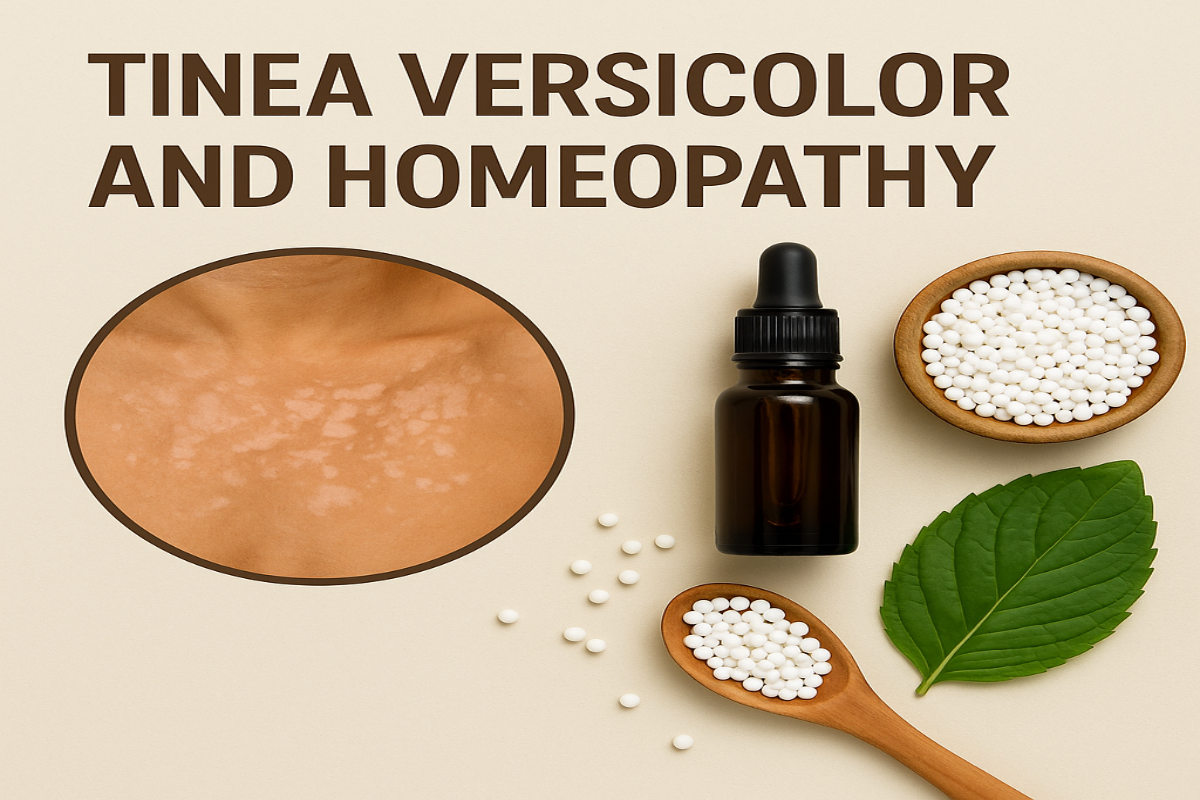
Tinea Versicolor and Homeopathy: A Natural Path to Skin Health
Tinea versicolor, also known as pityriasis versicolor, is a common superficial fungal infection that causes discolored patches on the skin. While it's not dangerous, it can be distressing, especially when it affects visible areas like the neck, chest, and back. For those seeking natural alternatives to conventional antifungal treatments, homeopathy offers a holistic approach that addresses not just the skin, but the whole person.
What is Tinea Versicolor?
Tinea versicolor is caused by a type of yeast called Malassezia, which naturally lives on the skin but can overgrow in warm, humid conditions. This overgrowth disrupts skin pigmentation, leading to:
- White, pink, tan, or brown patches
- Mild itching
- Scaling or flaking
- Worsening in hot, humid weather
It is not contagious but often recurs, especially in tropical climates.
Conventional Treatment
Dermatologists typically recommend:
- Topical antifungal creams or shampoos (e.g., ketoconazole, selenium sulfide)
- Oral antifungal medications in recurrent cases
While effective, these may not prevent recurrence or address underlying imbalances in the body.
The Homeopathic Approach
Homeopathy looks beyond the visible symptoms to understand the root cause and the individual's constitution. Homeopathic remedies are selected based on the totality of symptoms — emotional, physical, and environmental.
Here are some commonly used homeopathic remedies for tinea versicolor:
1. Sulphur
- For dry, itchy, scaly skin that worsens with heat or bathing
- Suited to individuals with a tendency to skin issues and sensitivity to heat
2. Tellurium
- When lesions are circular, with reddish borders and offensive odor
- Helpful in cases with fungal infections and ringworm-like appearance
3. Sepia
- Suited for hormonal imbalances, especially in women
- Dark discolorations and chronic skin conditions
4. Thuja Occidentalis
- Useful for recurring fungal infections
- Especially if associated with suppressed skin conditions or warts
5. Graphites
- For thick, sticky discharge from skin and cracks in skin folds
- Helps in chronic, sluggish skin healing
⚠️ Note: Homeopathy should be prescribed by a qualified practitioner after a detailed case analysis.
Lifestyle and Diet Tips
Whether using homeopathy or conventional treatments, some lifestyle habits can support recovery:
- Wear breathable, loose clothing
- Avoid oily skin products
- Stay dry and cool
- Include antifungal foods (like garlic and coconut oil)
- Strengthen immunity with a balanced diet and regular exercise
Can Homeopathy Cure Tinea Versicolor?
Homeopathy doesn’t "kill" fungi in the way antifungals do, but it stimulates the body’s own healing mechanism to restore balance. With the right remedy and constitutional support, it may reduce recurrence and improve overall skin health.
Conclusion
Tinea versicolor can be persistent, but with the right combination of natural remedies, healthy habits, and homeopathic support, many people find lasting relief. If you're looking for a more holistic way to manage skin conditions, consulting a professional homeopath might be your next step toward healthier skin — naturally.
Note: This blog provides general information and is not intended as medical
advice. Always consult healthcare professionals before starting any new treatment
approach for tinea versicolor or any other health condition
Call to Action:
Want to BE FREE FROM tinea versicolor ? Schedule a consultation today
at Sahitya Saraswati Holistic Homeopathic Clinic!
#Chronic Illness #Homeopathy